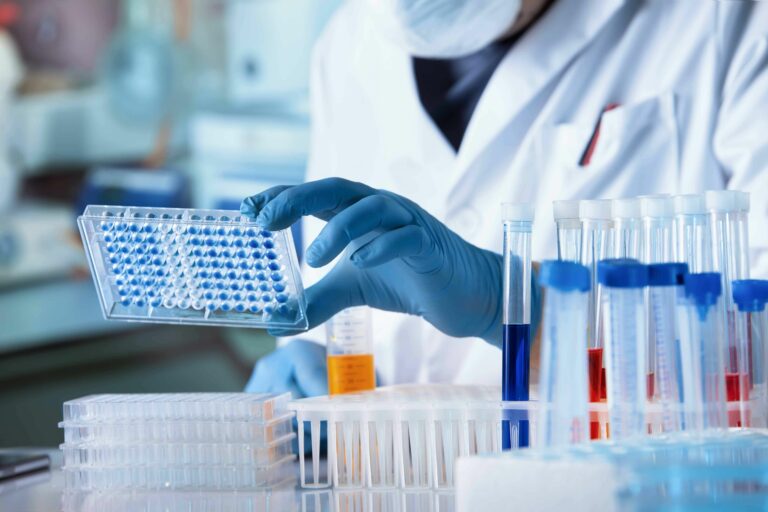Enzyme-linked immunosorbent Assay, commonly known as ELISA, is a popular analytical biochemistry assay. It is primarily used to detect the presence of an antibody or antigen in a sample. Since its development in the early 1970s, ELISA has become a key tool in diagnostics and quality control across various industries, including healthcare, food safety, and environmental monitoring. The versatility and specificity of the ELISA make it an essential procedure in the laboratory.
ELISA is based on the principles of immunology, leveraging the specificity of antibodies to bind with a particular antigen. The assay involves an enzyme-conjugate response that produces a detectable signal, most commonly a color change, in the presence of the target substance. This method allows for quantitative analysis, providing insights into the concentration of the substance within the sample.
One of the crucial components in an ELISA is the ELISA assay solution, which often contains the substrate for the enzyme conjugated to the detection antibody. The reaction between the enzyme and the substrate produces a measurable product proportional to the amount of the target antigen or antibody present in the sample.
Understanding The Basics Of ELISA Assay
Types Of ELISA Assays
There are several types of ELISA assays, each suited to different applications. The primary types are direct, indirect, sandwich, and competitive assays.
Direct ELISA involves coating the well of a microplate with the antigen and directly applying a labeled antibody. This method is straightforward and time-efficient, but it may lack sensitivity since it does not amplify the signal.
Indirect ELISA, on the other hand, uses a non-labeled primary antibody that attaches to the target antigen, followed by a labeled secondary antibody that binds to the primary antibody. Such a method is more sensitive due to the signal amplification from the secondary antibody.
Sandwich ELISA requires the antigen to be ‘sandwiched’ between two antibodies. The first antibody is coated on the well and captures the antigen from the sample. Then, a second labeled antibody is added, which binds to the antigen, creating the ‘sandwich.’ This method is highly specific and sensitive, making it suitable for detecting low concentrations of antigens.
In a competitive ELISA, the antigen from the sample competes with a reference antigen for binding to the coated antibody. The more antigens in the sample, the less the reference antigen is bound, inversely affecting the signal. This technique is particularly useful when the small antigen has only one antibody epitope.
Components Of An ELISA Kit
For those keen on performing an ELISA, understanding the components included in an ELISA kit is critical. Typically, an ELISA kit will contain microplate strips pre-coated with the antibody or antigen, standards to create a calibration curve, an ELISA assay solution, detection antibodies if necessary, and substrates for the enzyme reaction. TMB (3,3′,5,5′-Tetramethylbenzidine) is a common substrate used in ELISA assays for detecting horseradish peroxidase (HRP) enzyme activity.
It’s also crucial to have buffers, such as wash buffers and blocking solutions, which help to prevent non-specific binding and reduce background noise in the assay. The specificity of the components and the protocol’s fidelity are vital to achieving reliable results.
Setting Up The Assay
You’ll need to meticulously set up the assay to ensure its success. Start by preparing standards and samples in the recommended dilutions. The next step is to add these to the wells of the microplate, followed by incubation for a period, which allows for the binding of the antibodies and antigens.
After the incubation, the wells are washed to remove any unbound substances. The ELISA assay solution, which contains the enzyme-linked antibody and substrate, is added. Post another incubation phase, a stop solution is applied to halt the enzyme-substrate reaction, thus stabilizing the color development for the readout.
Analyzing ELISA Data
Once the ELISA has been performed, the results must be analyzed carefully. This is done by measuring the intensity of the color change, typically using a microplate reader. The absorbance values are recorded and then compared against a standard curve obtained from the known standards to quantify the antigen or antibody concentration in the samples.
It’s essential to include controls within your assay to validate the test’s results. Positive and negative controls help to confirm that the assay is functioning correctly and that the results are reliable.
Troubleshooting Common Issues
Even with meticulous preparation, issues can arise during an ELISA. These may include high background signals, low signal strength, or inconsistent results between replicates. Troubleshooting often involves:
- Checking the expiry of reagents.
- Ensuring proper washing procedures.
- Verifying sample integrity.
- Reevaluating the assay setup.
Conclusion
The ELISA assay stands as a cornerstone in analytical methodologies, valued for its robustness and adaptability across a spectrum of disciplines. Its capacity to detect and quantify specific proteins with precision makes it indispensable in disease diagnosis, immunology, and quality control processes. Mastery of ELISA’s components, alongside meticulous adherence to protocols, empowers researchers and technicians to glean accurate insights from their investigations. This mastery, awareness of potential pitfalls, and a commitment to thorough data analysis ensures that ELISA remains a trusted tool in advancing scientific knowledge and facilitating medical breakthroughs.
